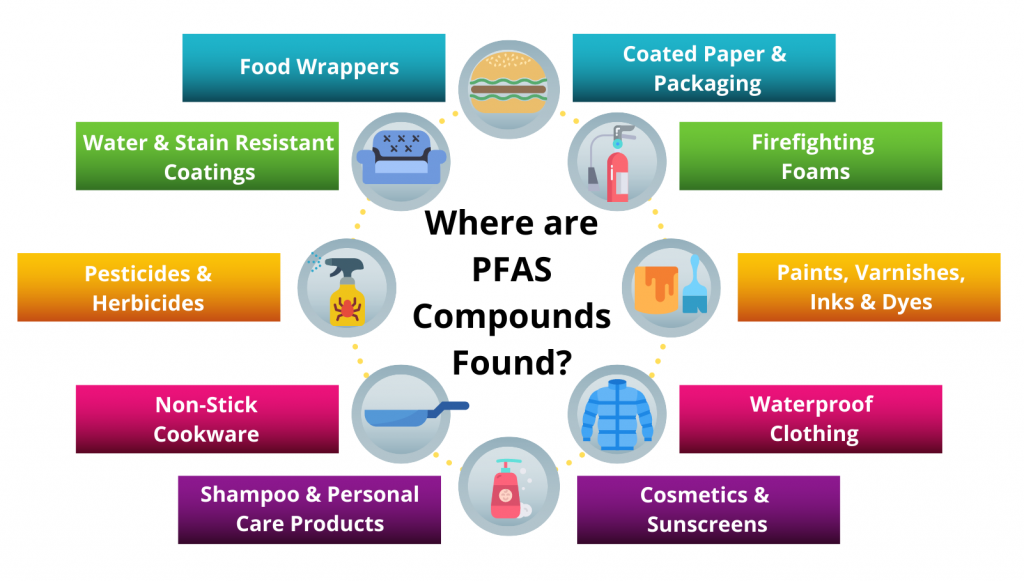PFA Exposure – An underpublicized threat impacting 200 million Americans
There has been increased media attention on PFAs (Per- and Polyfluoroalkyl Substances) in regard to their potential health effects. They are often labeled as “forever chemicals” and are known to be persistent in indoor dust and water supplies. This blog will discuss PFAs, how they can impact your health and how to test.
What Are PFAs?
According to the National Institutes of Health (NIH), PFAs are made of chains of fluorine and carbon atoms which form a very strong atomic bond. They are called forever chemicals because they do not easily degrade and scientists are having difficulties determining the half-life of these compounds. Some compounds associated with this group are perfluorooctanoic acid (PFOA) and perfluorooctane sulfonic acid (PFOS). According to the CDC, these compounds are often used in furniture, coatings, clothing, food packaging, heat resistant products, electrical insulation, and a wide variety of other common household items. According to a quote from Scientific American, there are thousands of compounds that fall into this category. Hundreds of these compounds are currently in use in the United States. Due to the ubiquitous nature of these compounds in everyday life, exposure is possible in common house dust and in water supplies.

Exposure Routes & Possible Health Effects From PFAs
Besides exposure from water and dust, PFAs are also present in foods due to their ability to bio accumulate – build up in an organism faster than the ability to remove it. This allows the compounds to travel up the food chain. According to a US based study, over 200 million Americans have potentially been exposed to PFAs. Another study which collected dust in 21 buildings saw these types of compounds present in all samples collected. PFAs are of concern because they are known to have endocrine disrupting impacts on health by mimicking hormones. These health impacts can impact fertility, hormone levels, liver damage, and possibly cause cancers. According to an article published by Yale University, PFA exposure in children can be linked to delays in brain development.
New EPA Advisory for PFAs in Water
On June 15, 2022, the Environmental Protection Agency issued four health advisories related to PFAs in water. These advisories are meant to replace previous water guidelines instituted in 2016. The press release also revealed that the Biden administration will provide substantial funding to municipalities to assist in removing these compounds from the water supply and the EPA will be issuing a PFAS National Drinking Water Regulation by the fall of 2022.
Conclusions
Due to the ubiquitous nature of PFAs and the uncertainties in exposure limits, protecting oneself from exposure can be difficult. One suggestion the EPA proposes is considering testing your home’s water supply for presence of PFAs. Indoor Science is uniquely positioned to support business and home owners by testing for PFAs in dust and water.
 877-872-4339
877-872-4339  Contact Us
Contact Us 






